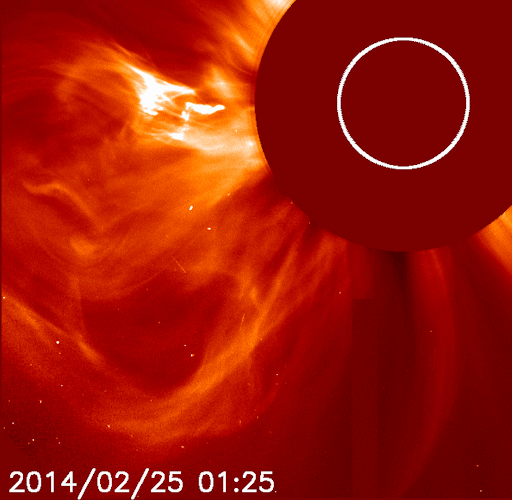February 25, 2014
Our active Sun
Quite the flare -- the sunspot numbers are down a lot but there are the occasional spots that are very active. AR1967 has been around the sun three times -- very large and strong. From SpaceWeather:X-FLARE!Posted by DaveH at February 25, 2014 10:38 AM
Returning sunspot AR1967 unleashed a powerful X4.9-class solar flare on Feb. 25th at 00:49 UTC. This is the most intense flare of 2014 so far, and one of the most intense of the current solar cycle.
Although this flare is impressive, its effects are mitigated by the location of the blast site--near the sun's southeastern limb, and not facing Earth. Indeed, a bright coronal mass ejection (CME) which raced away from the sun shortly after the flare appears set to miss our planet:
Radio emissions from shock waves at the leading edge of the CME suggest an expansion velocity near 2000 km/s or 4.4 million mph. If such a fast-moving cloud did strike Earth, the resulting geomagnetic storms could be severe. However, because its trajectory is so far off the sun-Earth line, the CME will deliver a glancing blow, at best, and probably no blow at all.
The source of the eruption is long-lived sunspot AR1967, now beginning its third trip across the Earthside of the sun. This region was an active producer of flares during its previous transits, and it looks like the third time will be little different. By tradition, sunspots are renumbered each time they return, so AR1967 will soon have a new designation. (Update: The new name of this sunspot is AR1990.)
Comments
Post a comment
